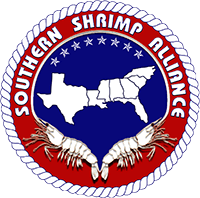Why should anyone care that there are banned antibiotics in imported farmed shrimp?
The first answer to that question is the potential impact that exposure to antibiotics such as chloramphenicol and nitrofurans has on the health of unwitting consumers. Importers and distributors of farmed seafood produced overseas argue that any potential harm caused by exposure to small amounts of banned antibiotics are overstated, despite the zero tolerance standard adopted by the U.S. Food and Drug Administration (FDA). Whatever the merits of the argument, no one asserts that exposure to banned antibiotics is in any way beneficial for consumers.
The second answer to that question relates to the impact that antibiotic use in aquaculture has on the emergence and spread of antimicrobial resistance in bacteria throughout the world. The availability of antibiotics to treat bacterial infections is essential for safeguarding human health. The prospect of increased development of antibiotic-resistant bacteria, resulting from exposure to unregulated antibiotic-use in aquaculture, is deeply troubling.
Nevertheless, the relationship between antibiotic-use in aquaculture and the encouragement of antibiotic-resistant bacteria in aquatic environments is not well understood. Fortunately, the subject has generated a substantial amount of academic interest and studies on the subject continue to be conducted, providing results that further general understanding of the issue.
This month, the scientific journal Frontiers in Microbiology published a paper by a team of researchers in Japan and Thailand reporting the findings of a field water sampling study conducted in 2013 and 2014 in Thailand. The goal of the study was to identify bacteria that might be used to effectively monitor the development of antimicrobial-resistance in aquatic environments. The researchers settled on Aeromonas spp., “Gram-negative, waterborne organisms that are ubiquitous in most aquatic environments.”
Looking at various sites in Thailand that included areas where wastewater was emitted from pig farms that used chlortetracycline as a feed additive for piglets, the researchers “detected a significant correlation between the environmental concentration of tetracyclines and the rate of tetracycline resistance . . .” in the Aeromonas strains found in samples. The researchers concluded that “[t]hese findings therefore suggest that aquatic environments, particularly those containing high concentrations of antimicrobials, act as reservoirs of [antimicrobial-resistant bacteria] and [antimicrobial-resistant genes].”
The researchers’ findings were consistent with an ever-growing body of scientific analysis on the subject. These findings matter because, as the study also explained, antimicrobial-resistant bacteria present a risk to human health through the potential transfer of antimicrobial-resistant genes from aquatic environments to humans:
Antimicrobials are widely used, not only for treating human infections, but also in livestock and fish farms. As a consequence, large quantities of these antimicrobials are released into aquatic environments via sewage or directly from livestock and fish farms, thereby providing a selective pressure for the development or acquisition of antimicrobial-resistant bacteria (ARB) and genes (ARGs) . . . . Indeed, aquatic environments have been shown to function as reservoirs of ARB and ARGs . . ., and the transfer of plasmid-encoded ARGs from aquatic environments to humans comprises the greatest potential risk to human health . . . .
Confirming that antibiotic-resistant genes develop in water where antibiotics are present does not tell us much about the risk of those genes finding their way into bacteria inside people. However, it does add to our understanding of the risks presented by the continued unjustified use of antibiotics in shrimp aquaculture in some countries.
The fact that the FDA, as well as similar food regulatory agencies in other nations, continues to find antibiotics in shrimp produced in only a small number of countries throughout the world indicates that the use of antibiotics in shrimp aquaculture is not necessary. Many shrimp aquaculture industries around the world have demonstrated, through an absence of detection in their shipments, that antibiotic use has been severely limited or eliminated in their farms.
Yet, a small group of countries continue to tolerate the use of antibiotics in their shrimp farms. Worse, U.S. importers and distributors of imported seafood have declined to take serious, meaningful action to prevent sourcing from farms that continue to use antibiotics. Even with the fanfare of importer-led certification programs and public statements decrying the practice, these claims must be evaluated in the context of increased findings of antibiotics in shrimp imports by the FDA. The results of the FDA’s inspections tell a very different story, a story of industry indifference to the harm caused by the use of antibiotics in shrimp aquaculture.
Read the article, “Use of Aeromonas spp. as General Indicators of Antimicrobial Susceptibility among Bacteria in Aquatic Environments in Thailand,” Frontiers in Microbiology, Volume 7, Article 710 (May 2016), here: http://journal.frontiersin.org/article/10.3389/fmicb.2016.00710/full#
